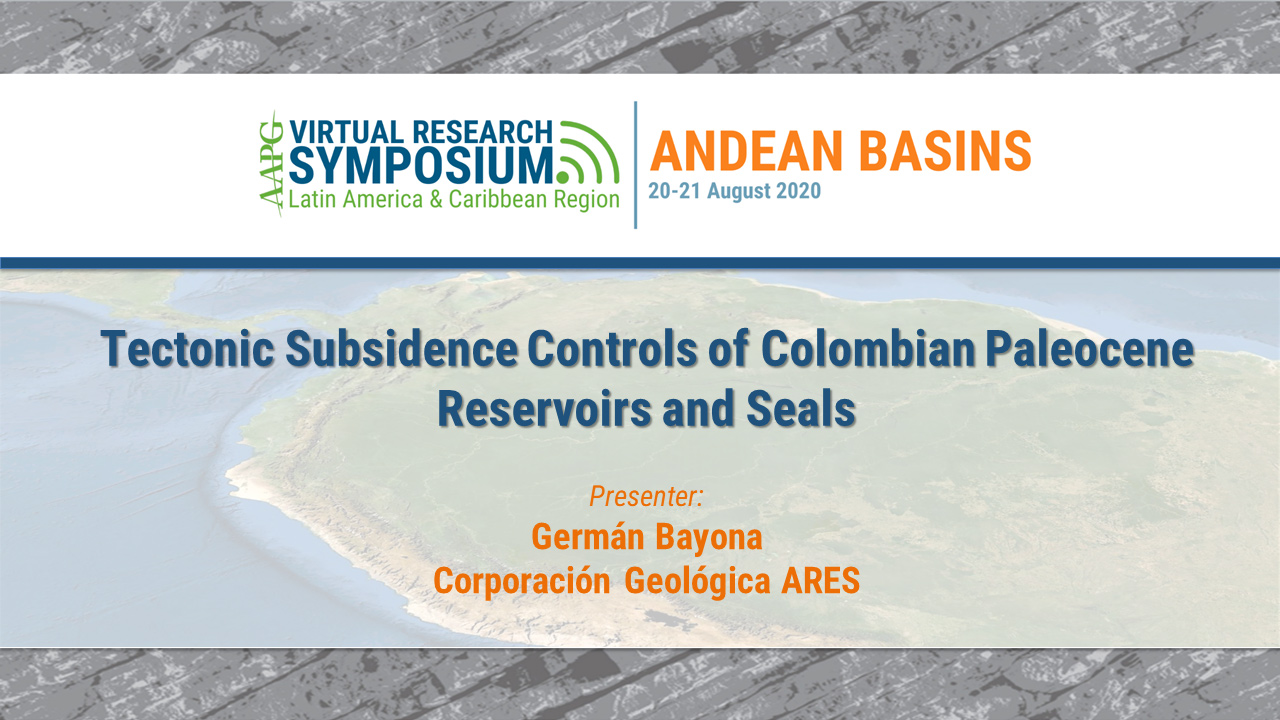
Summary
Authors: Germán Bayona (presenter), Corporación Geológica ARES; Camilo Montes, Universidad del Norte; Agustín Cardona, Universidad Nacional de Colombia-Medellín; Carlos Jaramillo, Smithsonian Tropical Research Institute
Paleocene sandstones in Colombian basins are important reservoir units but their expected lateral continuity can greatly change depending on the type of basin the sandstones accumulated on. An often-used model considers a continuous foreland basin that extends from the Central Cordillera to the Llanos basin. In this model, continental sandy reservoirs supplied from the distal foreland basin connect laterally with marginal, tidally influenced sandy units of the proximal basin, forming a continuous sandy unit from the Llanos foothills to the Magdalena basin. This basin configuration, similar to the Paleocene tectonic setting in the Central Andes, also condisers that tectonic loading erosion and basin filling caused the eastward migration of the depocenter with no deformation. A second model considers that orogenic accretion and the onset of east-dipping subduction in early Paleocene time caused (1) the clockwise tilt of an active magmatic arc (Central Cordillera- Santa marta massif), and (2) the reactivation of former Cretaceous extensional faults. Three basins, rather than a single one, formed with different tectonic subsidence mechanisms, sedimentary filling processes and provenance. Therefore, deposition of lower Paleocene sandstones occurred within closed basins bounded by faulted blocks of different composition. In late Paleocene, shallowing of the subduction slab produced the eastward migration of magmatism and deformation as far as the proximal Llanos basin. In earliest Eocene, dynamic topography (long wavelength) subsidence governed tectonic subsidence causing the regional accumulation and preservation of mud-rich deposits as paleosols, which are the stratigraphic seal of the reservoirs, and the onset of accumulation in the Llanos basin.
Bio:
Germán Bayona, Corporación Geológica ARES
Germán earned a BSc in Geology from the Universidad Nacional de Colombia (1992), a MSc from New Mexico State University (1999) and a PhD from the University of Kentucky (2003).
With more than 25 years of experience, he has always been an independent researcher and a geologist enjoying life. He currently works as researcher at the Corporación Geológica ARES, and as a consultant at Geocuencas S.A.S.
Germán is a member of AAPG, ACGGP, ACCEFyN, SCG and SEPM.
Please log in to view or purchase the video presentation